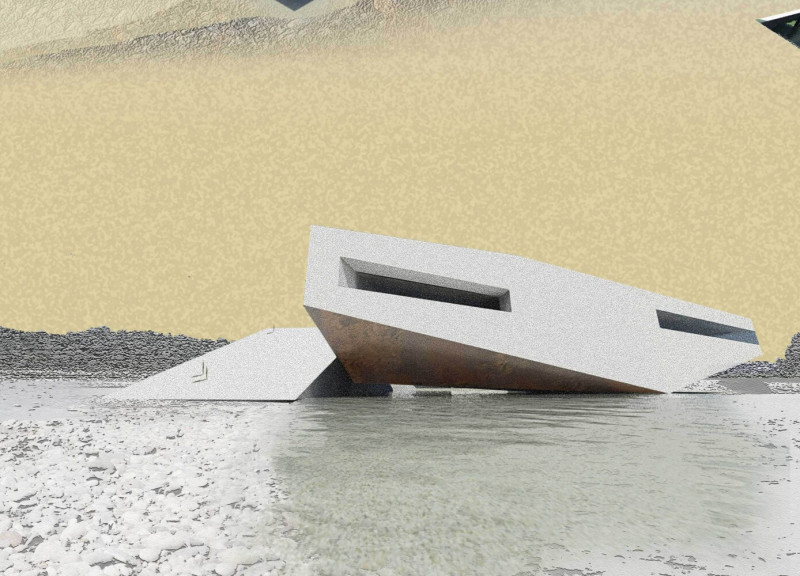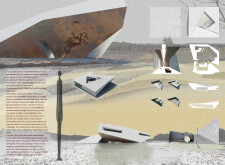5 key facts about this project
The design proposal centers around the cave archetype and explores the concept of an excavated solid, addressing two key aspects of human living on Earth. It aims to create signs that endure, resistant to the passing of time. The project also offers shelter from natural elements, similar to the way caves have served humans throughout history. Located along a river, it directly interacts with the environment, highlighting how water can affect the architectural form over time.
Design Concept
The core of the design features a square module that is repeated, scaled, and rotated. This approach symbolizes the ever-changing nature of time. The module creates a space where humans can learn to inhabit their surroundings meaningfully. Throughout the structure, walkable areas exist both above and below, which enhances exploration. A path transitions into a submerged inner open space, inviting visitors to consider the relationship between land and water.
Spatial Configuration
Inside, a mix of open, semi-closed, and closed areas encourages communication among users. The surface of the structure has carvings that reflect human passage, with hand motifs that serve as both recognizable and mysterious symbols of life. These details highlight how personal identity connects to the broader human experience in different settings.
Environmental Interaction
The positioning along the river emphasizes that water will impact the structure, potentially leading to flooding. It serves as a reminder of human sensitivity to climate changes. A mirror stands above the water inside the building, allowing users to see different aspects of themselves as they navigate the space.
The architecture invites visitors to engage with the surrounding landscape, creating a relationship between the built environment and nature. The design reflects an ongoing dialogue, illustrating the flow of time and the natural rhythms that shape human experience.


















































